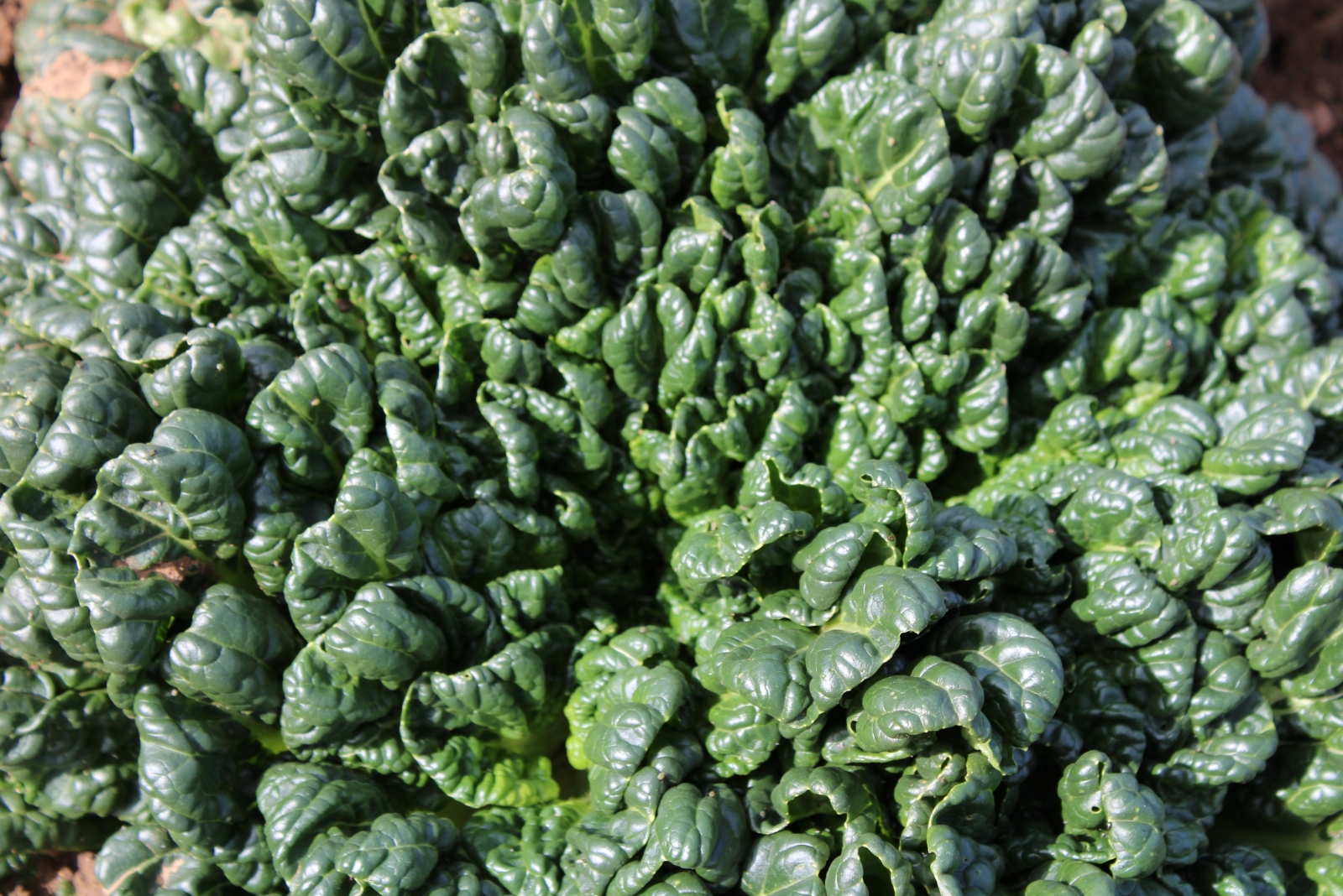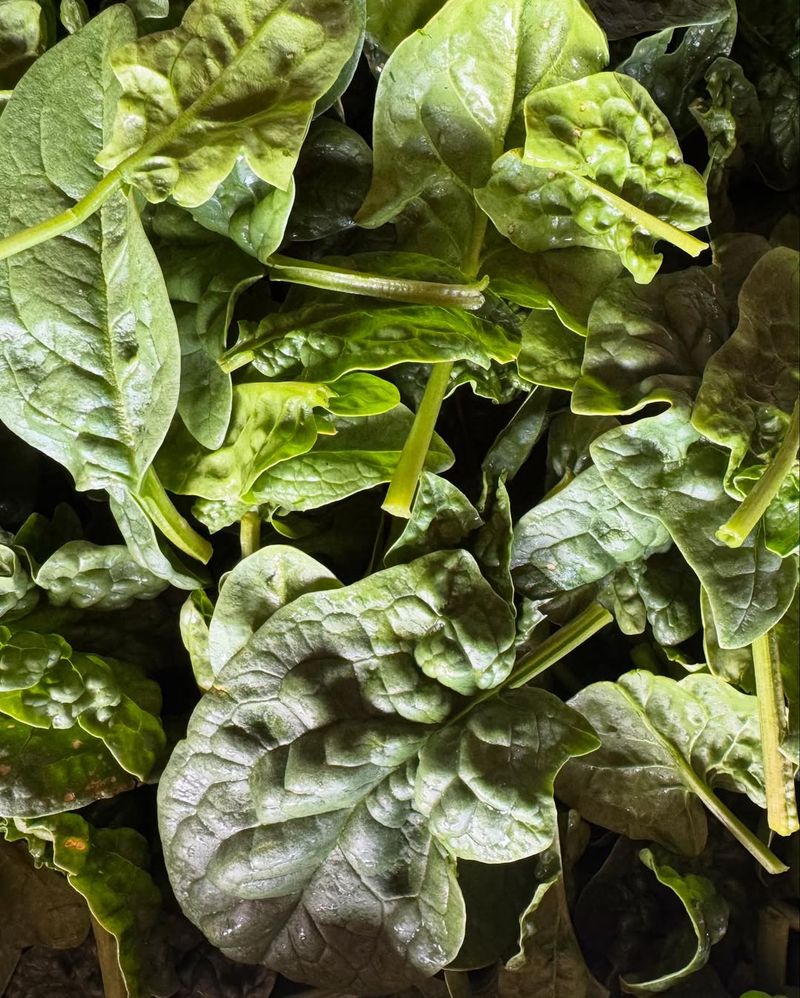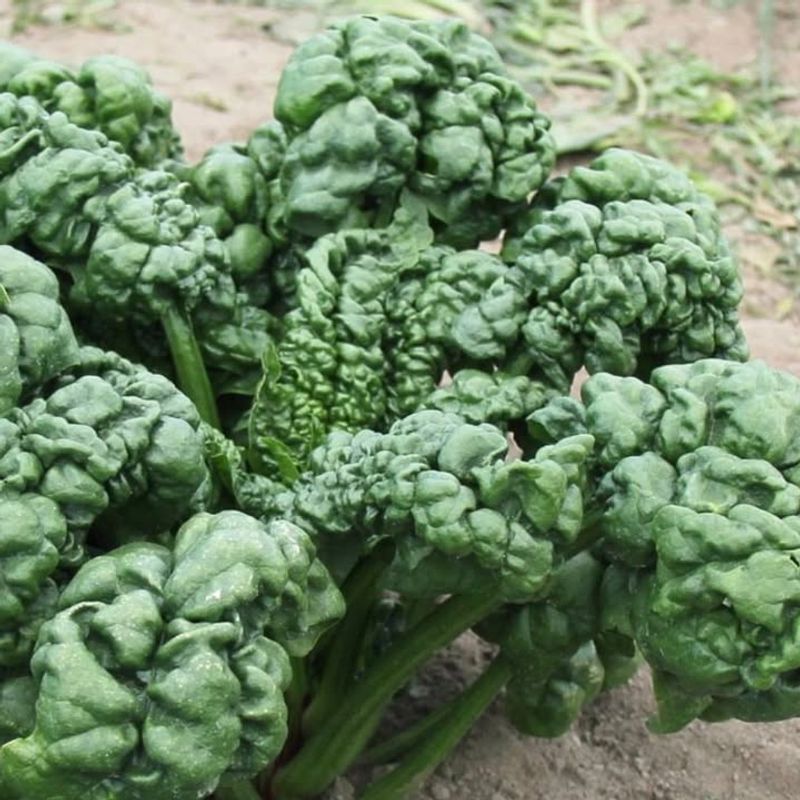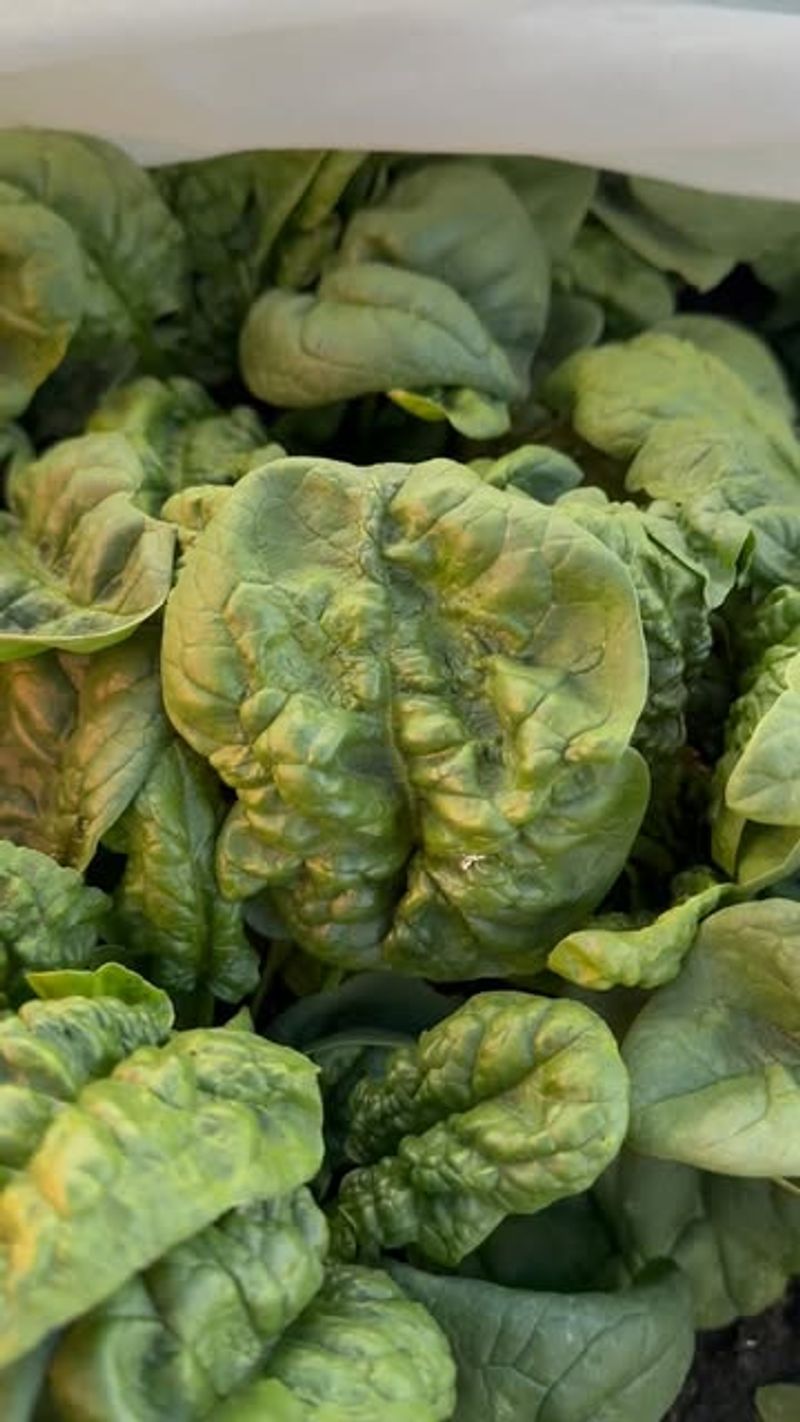Winter Bloomsdale has completely changed how I garden through the cold months, and I still can’t believe how tough it is. It stays lush and sweet even when Oregon mornings feel freezing enough to chase me back inside.
I planted it once just to test its winter claims, and now it’s the only spinach I trust for steady harvests. If you’ve struggled to keep greens alive in the chill, this hardy variety might be the one that finally sticks.
1. Superior Cold Tolerance
Winter Bloomsdale spinach laughs in the face of Oregon’s chilly weather. While other greens wilt when temperatures drop, this variety keeps growing strong through frosts and freezing nights.
Oregon gardeners love how it bounces back after cold snaps that would damage lesser plants. The leaves stay tender and flavorful even when ice crystals form on them overnight.
Plant it in fall, and you’ll be picking fresh spinach all winter without worrying about sudden temperature drops ruining your crop.
2. Quick Maturity for Extended Harvests
Ready to pick in just 40 to 50 days, Winter Bloomsdale doesn’t make you wait forever. Fast-growing plants mean you can start harvesting sooner and even squeeze in multiple plantings throughout Oregon’s cooler months.
Gardeners across the state appreciate how quickly seedlings develop into harvestable greens. Succession planting becomes easy when each crop matures so rapidly.
With proper timing, you can have continuous fresh spinach from October straight through March, making winter meals healthier and more delicious.
3. Thick, Savory Leaves Perfect for Cooking
Did you know? Bloomsdale spinach gets its name from the Bloomsdale Farm in Pennsylvania where it was developed in the 1920s. Those distinctive crinkled leaves aren’t just pretty—they’re incredibly practical too.
The thick, savoyed texture holds up beautifully when cooked, unlike flimsy varieties that turn to mush. Oregon cooks love using it in soups, stir-fries, and casseroles.
Fresh from your winter garden, these substantial leaves add nutrition and flavor to every meal without disappearing during cooking.
4. Slow to Bolt in Cool Weather
Bolting ruins spinach faster than anything, but Winter Bloomsdale resists this problem remarkably well. Cool Oregon temperatures naturally discourage premature flowering, and this variety takes full advantage.
Unlike spring varieties that rush to seed at the first warm day, Winter Bloomsdale stays productive much longer. Gardeners get weeks of additional harvest time before plants finally go to seed.
Your winter crop remains sweet and tender instead of turning bitter, making every leaf worth eating from first frost to spring thaw.
5. Exceptional Disease Resistance
With a reputation for toughness, Winter Bloomsdale shrugs off common spinach diseases that plague weaker varieties. Oregon’s damp winter conditions can encourage fungal problems, but this classic cultivar handles moisture surprisingly well.
Downy mildew and leaf spot rarely cause serious issues with proper spacing and air circulation. Gardeners spend less time worrying about plant health and more time enjoying their harvest.
Strong genetics mean fewer failed crops and more reliable winter greens for your family’s table throughout the rainy season.
6. Cut-and-Come-Again Harvesting
Harvest the outer leaves, and Winter Bloomsdale keeps producing new growth from the center. This magical quality means one planting provides multiple meals over many weeks.
Oregon gardeners can pick fresh spinach for dinner tonight while leaving younger leaves to mature for next week’s salad. The plants never seem to quit as long as cold weather continues.
Careful harvesting extends your yield dramatically, turning a small garden patch into a winter-long supply of nutritious greens for soups, smoothies, and side dishes.
7. Nutrient-Dense Winter Superfood
Cold-weather spinach develops higher sugar content and deeper nutrition than summer crops. Winter Bloomsdale grown in Oregon’s cool climate becomes incredibly nutrient-rich, packed with vitamins A, C, and K plus iron and folate.
Your body craves these nutrients during darker winter months when fresh produce gets expensive at stores. Homegrown spinach delivers superior nutrition compared to shipped greens that lose vitamins during transport.
Every leaf you harvest provides powerful health benefits while tasting sweeter and more flavorful than anything from the grocery store.








